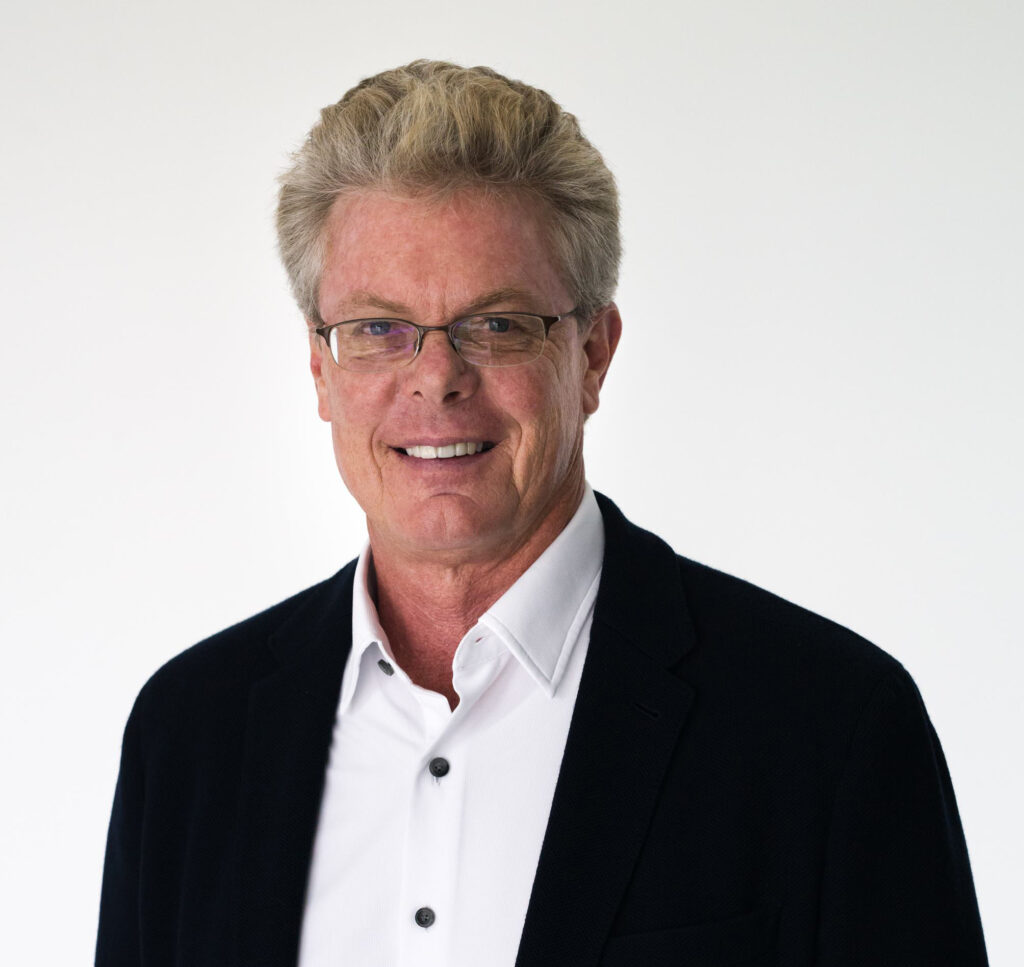The New Take on Health Insurance
- January 2, 2024

Hand arranging wood block with healthcare medical icon. Health insurance – concept.
Austin’s Curative and Dallas’ Evry Health are trying to change employer-sponsored health coverage.
Employers are using various tactics to combat runaway health-care costs, but one of their most popular methods is high-deductible insurance. Deductibles are what people must pay for health care before insurers start covering medical costs.
Some 55.7 percent of American private sector workers nationwide, including 55.5 percent in Texas, were enrolled in high-deductible plans in 2021. That was the highest on record since 2012, when it was 34.3 percent, according to a ValuePenguin analysis that was published in January of this year.
“That data is probably fairly accurate,” says Sebastian Sanchez, vice president, principal, at Roach Howard Smith & Barton, a North Texas independent insurance brokerage serving companies, families, and individuals. He added that while high deductibles are most common, a growing number of employers are offering traditional PPO networks with copays.
High-deductible policies typically come with lower premiums and may be appropriate in some instances, such as plans paired with tax-advantaged savings accounts. But for some workers, high deductibles can be problematic when it’s time to use the insurance.
“Over two-thirds of employees say they face some type of challenge in getting the health care they need, with the top challenge being trouble affording the health-care costs that aren’t covered by health insurance plans, such as deductibles and copays,” according to a 2022 survey by Mercer, a consulting firm that is part of Marsh McLennan.
Behind pay and workload, insufficient health benefits are the next top reason employees would consider leaving their employer, the poll found. Perhaps not surprisingly, a Mercer survey of employers last year found that most were avoiding shifting health plan costs to employees in 2023 despite rising health-care costs.
An unlikely answer to issues in health care may come from a pair of Texas health insurers that began offering coverage aimed at employers within the last couple of years. Austin’s Curative Insurance Co. and Dallas-based Evry Health say they can provide competitively priced premiums without hitting patients with charges for in-network care such as deductibles, copays, and coinsurance. The two upstarts focus on preventive care, catching health problems early, and ensuring people with chronic conditions get proper care.
Evry embraces value-based care. Definitions vary as do approaches for carrying it out, but the Commonwealth Fund, a foundation that executes research among other things, says value-based care “ties the amount health-care providers earn for their services to the results they deliver for patients, such as quality, equity, and cost of care.”
That runs counter to the traditional system of paying medical providers for each service they provide.
Curative, which has 350 employees, and Evry, which has 20, are going up against multibillion-dollar names such as Blue Cross Blue Shield of Texas, Aetna, and United Healthcare.
Evry Health was acquired in October by McKinney-based Globe Life Inc. (NYSE: GL), a large provider of life and supplemental health insurance. However, Evry will be an independent subsidiary of Globe Life and will operate the same as before the acquisition, says Chris Gay, Evry’s CEO and cofounder. “The transaction will be rocket fuel for our growth.”
Globe Life and Evry expect to get regulatory approval for the deal sometime in 2023.
High Hopes
Here is a look at the growth of high-deductible health plans in employer-sponsored insurance. Some organizations have embraced these plans to cut costs. Deductibles are what patients must pay for medical costs before insurance kicks in.
• Portion of covered employees enrolled in a plan with general annual deductible of $2,000-plus for single coverage in 2022, all firm sizes: 32 percent (up from 7 percent in 2009).
• In small firms, 2022: 49 percent (16 percent in 2009).
• Large firms, 2022: 25 percent (3 percent in 2009).
Small businesses have 3–199 workers; large businesses have 200-plus. Numbers include workers in high-deductible plans with savings options and other plan types. Average general annual deductibles are for in-network providers. Source: KFF
LOWER COSTS THROUGH MEDICAL CARE
In the first year of coverage, employer-sponsored plans with high deductibles can cut costs because workers defer health care, says Fred Turner, Curative’s CEO and cofounder.
“The problem is when you dig into where that saving came from, it’s these crazy things like people cutting their pills in half, not doing their physicals, not doing their colonoscopies,” he says. “By the second year, you’re already basically back where you were, and by the third year, you’re spending 20 percent more than you would have been spending because all of this deferred care and lack of screenings catches up with you.”
Colon cancer rates have a measurable increase by the third year, he says. “What could have been a primary care visit is now an (emergency room) visit and a hospital stay, and it’s these things that could have been prevented.”
A survey commissioned by Curative and published last May found 56 percent of working San Antonians with employer-sponsored health insurance have deferred seeing a doctor or specialist in the last 12 months because they were worried about paying for it. Some 61 percent report not adhering to prescription medicines.
“Further, this trend of deferring care heightens among those who need care most: individuals who describe having average to poor health (64 percent) and patients with chronic conditions (52 percent),” according to the survey news release.
Over a three-year period, Curative anticipates it will save money by providing care upfront, when health conditions cost less to deal with, Turner says. Year one will cost more, “but we’re the insurer so we take on that risk. By the third year, they will have spent less money overall.”
Curative’s emphasis on up-front care starts with a “baseline visit,” which members must do within the first 120 days of their policies becoming effective to avoid cost sharing. The visit includes time with a clinician focused on preventive care and a health-risk assessment, including getting blood tests done. The visit doesn’t replace an annual physical, but it helps Curative identify many common conditions that, if discovered and addressed early, can prevent more serious problems down the road. The absence of cost sharing helps encourage patients to get treatment for medical issues, such as anything uncovered in their baseline visits.
One area where Curative excels is its pharmacy benefits, Turner says. The company has pharmacy spending of $68 per member per month, where the Texas average is closer to $120.
The design of Curative’s pharmacy benefits has helped it deliver medication adherence of more than 90 percent for chronic conditions such as hypertension and diabetes, all while covering many specialty drugs with no money out of pocket for members, he adds. Curative’s outside pharmacy benefit manager has found across its book of business that adherence percentage numbers are in the 70s for everything except chronic obstructive pulmonary disease, where it is 42 percent.
Curative’s pharmacy benefits deliver better medication adherence partly because many of the medications it covers have zero copays. In addition, Curative’s pharmacy staff make follow-up calls when patients go on new medications to check whether they have encountered issues with the drugs and ensure they are taking them appropriately.
Curative has a wide network of pharmacies through a pharmacy benefit administrator it contracts with, Capital RX, according to company spokespeople. The number of pharmacies in Capital RX’s network varies by state and municipality.
Like Curative, Evry Health encourages preventive care and early detection by removing barriers, such as high deductibles, that might otherwise prevent members from getting care. When people who are part of Evry’s exclusive provider organization (EPO) and preferred provider (PPO) plans go in-network, they receive yearly eye exams and prediabetic treatment for free, along with free office visits and generic prescriptions.
Evry also offers at least 12 wellness programs with rewards for patients, all at no cost to them or their employers. Each member 16 years or older can earn up to $1,000 annually by making healthy choices, such as going through the milestones of a diabetic program. “If you run a 10K, show us your race card, and we will be happy to load $200 onto your (rewards) card,” Gay says.
Caveats
Here are a couple of things to know about Curative’s and Evry’s insurance policies.
Curative doesn’t charge for in-network care if, within the first 120 days after a policy starts, members have an hour-long meeting with a care navigator and an affiliated clinician. Among other things, this helps determine which patients need given types of care and ensure they get proper treatment. Members who don’t do this baseline visit within 120 days will have $5,000 deductibles and 20 percent co-insurance.
Evry has a copay for emergency room visits to encourage people to use other services where those are faster and more appropriate. It also has policies with deductibles so people can use their health savings account plans within the tax law.
TECH AS A COMPETITIVE ADVANTAGE
Evry strives for what Gay calls “unexpectedly exceptional customer service.” That happens partly through its technology, which he says allows the company to be predictive and to personalize its members’ experiences.
The company “purpose built” its technology infrastructure to remove barriers, delays, and duplications in care, Gay says. The firm aggregates its clinical and claims data partly to suggest what might be most beneficial for given individuals.
Evry uses clinical and claims data in this way not to diagnose health problems, but rather partly to coordinate care with the intention of reducing delays and duplications that otherwise can be common, Gay says. This can involve things like reducing the amount of time required for preauthorizations of significant care such as surgeries.
It also uses this data to create personalized wellness programs.
Based on health surveys that members complete, members can get rewards for doing things like running 10Ks or enrolling in maternity programs.
For one member who had dealt with gut issues for years, Evry’s software determined that the problem might be with her microbiome, meaning micro-organisms that live in that part of the body. Evry provided a test kit that helped determine that the member needed a dietary change, something that cured the problem. The test kit was provided by Digbi Health, an Evry Health vendor involved in testing gut-related issues. Digbi also did the actual test for the member.
“That information allowed her to make the changes, and she has gotten off the treadmill of doctors and drugs,” Gay says. “She had been suffering needlessly for years due to a lack of data and good diagnostics.”
Evry ran its software to come up with the initial analysis based on claims, clinical, and wellness data. After that, one of its care coordinators, who are registered nurses, suggested outreach to the patient. Care coordinators help members get the most out of their benefits through avenues such as helping them find in-network providers or filling people in on benefits that are available to them, including rewards cards and wellness programs.
Technology can be an avenue through which startups in commercial health insurance can gain an advantage over big competitors.
Predictive analytics, artificial intelligence, and moving to digital documentation can help organizations remove administrative burdens, says Bryan Komornik, partner, health care and life sciences, at West Monroe, a Chicago-based consulting firm.
“A significant portion of the insurance premiums charged by the larger private health insurers goes toward nonmedical expenses such as administrative costs and promotional costs,” he says. “Startups are removing nonmedical expenses through more sophisticated technology solutions.” Tech may also help improve members’ experiences.
Atop standard tools, Curative’s system enables members to text with care navigators around the clock and get accurate information, Turner says. “One of our biggest technology achievements to date is that kind of concierge responsiveness and helping them navigate the system.”
Care navigators’ duties include helping Curative patients learn how to do things like determine whether providers are in network, along with explaining terminology such as copays and deductibles to patients. Care navigators are nonclinical health-care professionals.
Bad to Worse
Among 13 of the world’s wealthiest nations, the United States spends disproportionately more on health care and yet gets some of the worst results for patients.
- Health care spending as percentage of gross domestic product, US, 2021: 17.8 percent
- That same percentage for the number two nation, Germany: 12.8 percent
- Among these 13 nations, the US has:
- Lowest life expectancy at birth.
- Highest death rates for avoidable or treatable conditions.
- Highest maternal and infant mortality.
- One of the highest suicide rates.
Source: Commonwealth Fund
INSURANCE IN 2030
Technology will make a big difference for employers when buying commercial health insurance in 2030 versus doing so today, says Marianne Fazen, president and CEO of the Texas Business Group on Health and one of its chapters, the Dallas-Fort Worth Business Group on Health. These nonprofits represent self-insured employers statewide and in North Texas, respectively.
“New and faster technologies will make health care more usable, readily available, and more costly,” she says. “This will impact the nature of employer-sponsored health benefits. More emphasis by employers and their health insurance plan partners will be placed on prevention, healthy living, health education, and outpatient services, with less need for high-cost hospitalizations.”
Turner believes the health insurance system will get rid of copays and deductibles by 2030. “I think it’s a failed experiment that shifting costs to employees is somehow going to drive them to become great consumers and price shop, even when half of the doctors don’t know what the prices are for their services. All it drives is patients putting off care as long as possible to avoid the costs. They can end up in the emergency room or the hospital because they didn’t deal with things in a preventive way.”
Mark Jamilkowski, Evry’s chief financial officer and chief actuary, says that by the start of the next decade there will be increased adoption of personalized electronic health records, where patients control their own data. That will make it easier for patients to go to whatever providers they like. “However, it will require providers and insurers to improve their technology systems to support that,” he says.
One problem that may reach a point of no return by 2030 is escalating medical expenses.
It is not sustainable for health-care costs to continue growing at the pace they have over the past 10 to 15 years, Sanchez says. “This cost balloon will eventually be too large for the middle and even upper middle class to afford. This will hopefully be a catalyst for change. It will require some regulation and transparency over the players in health care that have become top-valued companies in the stock market. Our understanding of health-care economics would need to be rewritten to one where the American people have access to affordable, competitive care as the standard and provider compensation based on health outcomes rather than volume.
CURATIVE’S, FRED TURNER LIGHTNING ROUND
Who is your most admired fellow Texas CEO?
Is it too controversial nowadays to say Elon Musk? I was an Elon Musk fan before it was cool.
Your favorite Texas product?
Stetsons.
Best advice you ever got?
Move to Texas.
What quote best summarizes your personal approach to leadership?
Always follow the data.
What would surprise people about you?
Usually, I say that I have two cats, but I already revealed that with Bear showing up
in the background to be interviewed. I’m a cat person.
How do you start your day?
Usually running along the lake in downtown (in Austin).
What’s something you’re afraid of?
Not a fan of spiders.
What is your favorite part of Austin?
I like the fact that if I go one way, it’s the lake and it’s green and beautiful, and I can go
on a 10-mile run. And if you go the other way, it’s city, and there’s fantastic restaurants.
It’s all right there, and I can walk. I don’t have to Uber around. I could never walk to
anything in California.
EVRY’S HEALTH, CHRIS GAY’S LIGHTNING ROUND
Who is your most admired fellow Texas CEO?
Hubert Zajicek, CEO of Health Wildcatters.
Your favorite Texas product?
1st – East Texas blueberries (due to a quirk of geology and climate, East Texas is one of the earliest seasonal producers of blueberries).
2nd – Watermelon (Texas happens to be the number three producer nationally.)
What quote best summarizes your personal approach to leadership?
Treat others as you want to be treated.
What would surprise people about you?
My own children did not believe I had long hair and a ponytail when I was younger (I’m bald now). My wife had to bring out an old photo album to show them.
What time of day are you most productive?
I am most productive after the morning workout and after the evening walk. I get my best thinking done while exercising, and afterward it is easier to get through any tasks.
How do you start your day?
I start the day with a workout. Depending on the day and weather, it will be a trail run or gym workout (weights). Then coffee. After all the years of travel, I just drink instant coffee.
What is your favorite part of Dallas?
Norbuck Park. It is good for cross-country running (trail running) year-round. Second place would be the park between the Trinity River levees during bird migrations.






